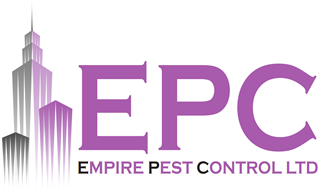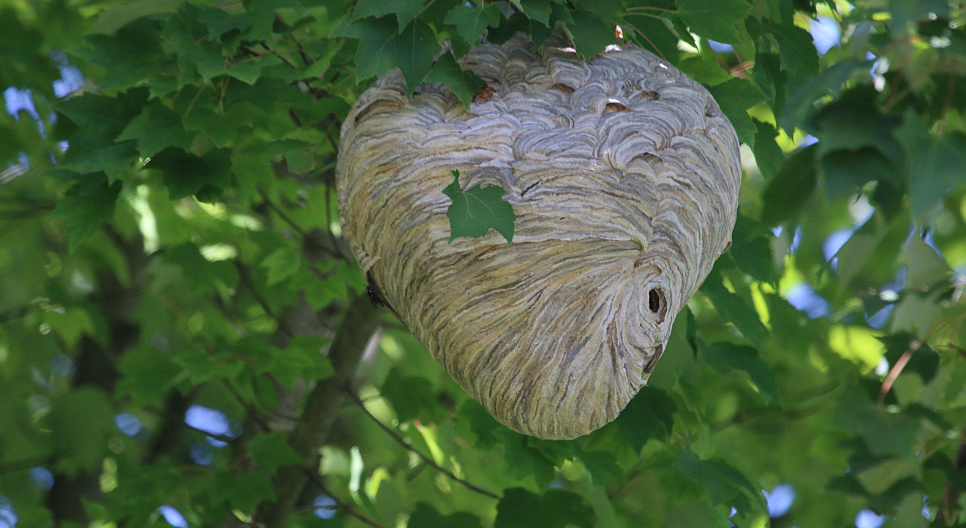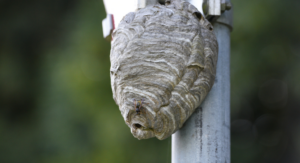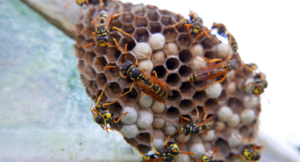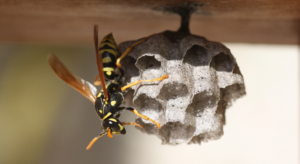Discovering a wasp nest on your property can be a daunting experience. With their painful stings and aggressive nature, wasps can threaten you, your family, and your pets. Handling a wasp nest requires caution and proper techniques to ensure safety and effective pest control. In this article, we will guide you through the steps to take when you find a wasp nest, emphasizing safe practices and professional pest control methods.
What to Do When You Find a Wasp Nest?
Wasps, known for their aggressive nature and painful stings, pose a threat to you, your family, and your pets. However, it’s crucial to handle the situation carefully and follow the right steps to ensure a safe and effective nest removal.
Stay Calm and Assess the Situation
The first step when you encounter a wasp nest is to remain calm. Do not disturb the nest or swat at the wasps; this can trigger an aggressive response. Small nests might be manageable to handle independently, but large nests in hard-to-reach areas require professional intervention. Before making the decision, identify the type of wasp you’re dealing with to better understand their behaviour and nesting habits.
Common species include
- Paper wasps
- Yellowjackets
- Hornets
- Bald-Faced Hornets
- Cicada Killers
- Mud Daubers
Ensure Your Safety
Before attempting any form of wasp nest removal, make sure you are wearing appropriate protective clothing. Thick, long-sleeved clothing, gloves, and a face mask can help prevent stings. If you are allergic to insect stings or the nest is located in a difficult-to-reach area, it is best to call a professional pest control service.
DIY Wasp Nest Removal
If you decide to remove a small wasp nest on your own, do so during the evening or early morning when wasps are less active. Use a commercial wasp spray, available at hardware stores, to saturate the nest from a safe distance. Wait until all wasp activity has ceased before attempting to remove the nest. Dispose of the nest properly, preferably by sealing it in a plastic bag and placing it in the trash.
Professional Pest Control
Hiring a professional pest control service for large nests or nests in hard-to-reach areas is best. Pest control experts have the knowledge, experience, and equipment to handle wasp nests safely and efficiently.
Experienced pest control technicians come equipped with specialized gear and knowledge about wasp behaviour, ensuring the removal process is conducted safely. They employ environmentally friendly methods and appropriate insecticides to eliminate wasp nests, mitigating the risk of stings and allergic reactions.
Preventive Measures
After removing the wasp nest, take preventive measures to avoid future infestations. Seal any cracks or holes in your home’s exterior, keep garbage cans tightly sealed, and avoid leaving sweet food or drinks uncovered outdoors. Regularly inspect your property for signs of wasp activity and address them promptly to prevent nests from forming.
Conclusion
Finding a wasp nest can be a stressful experience, but by staying calm, ensuring your safety, and following the appropriate removal methods, you can effectively deal with the situation. Whether you handle a small nest on your own or hire professional pest control services for larger infestations, prioritizing safety and thoroughness is key to successful wasp nest removal.

